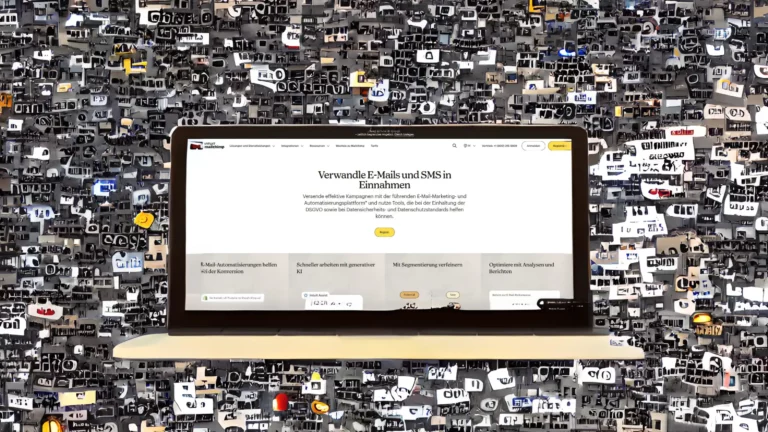Shopware 6 is one of the most popular platforms for e-commerce solutions in the German-speaking world. With the latest version, Shopware has introduced numerous new features and improvements that help retailers to make their online store even more efficient. However, an important success factor for an e-commerce business remains the integration of a suitable merchandise management system (Wawi). In this article, we compare the three most commonly used merchandise management systems – PlentyMarkets, JTL-Wawi and SAP Business One – and analyze how well they can be combined with Shopware 6.
Shopware 6: A brief introduction
The new version of Shopware continues to focus on maximum flexibility, a modern architecture and user-friendliness. The following innovations and features are particularly noteworthy in Shopware 6:
- Optimized performance boost: Improvements for large product catalogs ensure shorter loading times.
- Extended API connectivity: Perfect for connecting to external systems such as ERP and CRM solutions.
- Simplified administration: An even more intuitive backend, additionally supported by AI-supported tools for analysis.
- Subscription Commerce functions: Offer customers the option of automating regular deliveries.
The flexibility of Shopware 6 is particularly evident in its integration with merchandise management systems. Which is the best choice? Let’s take a closer look at the three most popular systems.
1. PlentyMarkets
PlentyMarkets is a cloud-based omni-channel system that serves as both a merchandise management system and a complete e-commerce solution. It is characterized by seamless integration with Shopware.
Features of PlentyMarkets:
- Multi-channel solution: Enables sales via various channels such as Amazon, eBay and, of course, Shopware.
- Warehouse management: Supports the management of multiple warehouse locations and supply chains.
- Automation: Processes such as order processing, shipping and returns can be fully automated.
- Flexible API interface: Perfect integration with Shopware 6 thanks to rule-based data exchange.
Advantages:
- Especially for retailers who use many sales channels at the same time.
- Minimal manual work processes thanks to a high level of automation.
- Cloud solution with regular updates.
Disadvantages:
- Beginners may be overwhelmed by the variety of functions.
- Dependence on a stable internet connection through the cloud infrastructure.
Conclusion: PlentyMarkets harmonizes perfectly with Shopware, especially when the focus is on multi-channel commerce.
2 JTL-Wawi
JTL-Wawi is a free merchandise management solution that is particularly attractive for small and medium-sized companies. Shopware connectivity is also easy to implement thanks to the JTL connector.
Features of JTL-Wawi:
- Inventory and warehouse management: Provides fully automated warehouse, shipping and fulfillment functions.
- Connection to marketplaces: Simple export options for platforms such as eBay and Amazon.
- Returns management: Efficient handling of returns.
- Open API: Thanks to the JTL Connector, JTL is fully compatible with Shopware 6.
Advantages:
- Free basic version – ideal for start-ups.
- Strong automation and control of processes.
- Can be installed locally, ensuring independence from the cloud.
Disadvantages:
- Slightly more complex to set up compared to PlentyMarkets.
- More complex integration may require external help.
Conclusion: JTL-Wawi is a cost-effective solution that is ideal for smaller retailers and integrates well with Shopware 6.
3. SAP Business One
SAP Business One is a powerful solution for medium-sized to large companies that require comprehensive control and analysis functions. However, it requires a deeper implementation when connected to Shopware 6.
Features of SAP Business One:
- Comprehensive range of functions: From financial accounting to warehouse and logistics management to detailed analysis tools.
- Integration capability: Thanks to the open API, a connection to Shopware can be implemented, but requires sound technical knowledge.
- Scalability: Ideal for growing companies or those with multiple locations.
- Data analysis: Provides BI (Business Intelligence) tools to support informed decisions.
Advantages:
- Perfect for complex business processes in larger companies.
- Comprehensive documentation and support from SAP.
- High stability and adaptability.
Disadvantages:
- Significantly higher costs than PlentyMarkets or JTL-Wawi.
- Implementation requires time and qualified partners.
Conclusion: SAP Business One is a robust and scalable solution for larger companies, but requires careful implementation when linking with Shopware 6.
Comparison: Which solution is best suited to Shopware 6?
| Function | PlentyMarkets | JTL-Wawi | SAP Business One |
|---|---|---|---|
| Costs | Medium | Free of charge (basic version) | High |
| User friendliness | Simple | Medium | Complex |
| Multi-channel retail | Optimal | Good | Good |
| Connection to Shopware 6 | Very good | Good | Good, but complex |
| Company size | SMES | Small and medium-sized enterprises | Medium & large companies |
| Scalability | High | Medium | Very high |
The right choice for your business
Choosing the right merchandise management system depends heavily on the individual requirements of your company. If you want to sell quickly and easily on multiple channels, PlentyMarkets is the ideal solution. For smaller companies with a focus on cost efficiency and solid functionality, JTL-Wawi is particularly suitable. If, on the other hand, you run a large company and are looking for maximum scalability and functions, you should opt for SAP Business One.
Shopware 6 offers excellent integration possibilities with all three systems thanks to its open architecture. So nothing stands in the way of your successful online business!





